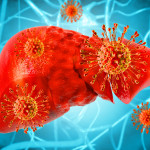Rapid on-site testing for hepatitis C virus (HCV) at a supervised injection site in Canada led to greater engagement and linkage to care among people who inject drugs, improving the likelihood of getting treated, according to study findings published in The Lancet Regional Health: Americas. Among those who received treatment, 86% were cured.
Even though hepatitis C is common among people who inject drugs, access to care can be difficult, with numerous barriers ranging from stigma to misinformation. While more than 95% of people treated with direct-acting antivirals can be cured, many people never receive the treatment they need.
Jeff Powis, MD, of Michael Garron Hospital in Toronto, and colleagues assessed the availability of rapid point-of-care HCV RNA testing and linkage to care for people who used a supervised injection site at a community health center. Supervised consumption facilities enable people to use drugs in a clean, safe space under the supervision of trained staff and offer access to primary health care and social services. The researchers also assessed hepatitis C prevalence and treatment uptake.
This observational study, conducted between August 2018 and September 2021, enrolled 124 participants. The average age was 41 years, and 65% were men. More than half (57%) were white, 33% were Indigenous and 10% were classified as “racialized, non-Indigenous.” Nearly three quarters were homeless or unstably housed, and 86% relied on social assistance for their main income. Half reported most often injecting fentanyl, and 68% said they injected daily. Most (76%) used the safe injection site daily, weekly or a few times a month.
Before the study, 69% of participants said they had been tested for hepatitis C, but 53% were unaware of their status. When the study began, 54 participants (44%) tested positive for HCV RNA, indicating a current active infection. Among those who tested positive, 72% were either diagnosed for the first time or had previously been unaware of their positive status. Those who tested negative were asked to repeat the test every three months.
Hepatitis C prevalence was twice as high among people who had unstable housing compared with those who were stably housed and three times as high among people who injected drugs daily compared with those who did so less often.
Among the 70 participants who were HCV RNA negative at baseline, 37 returned for follow-up testing. Ten were newly diagnosed with hepatitis C during follow-up, for a cumulative HCV incidence rate of 38% at 15 months, or 35.1 cases per 100 person-years. Participants with recent HCV infection were on average younger and more likely to report daily injecting relative to participants who remained HCV negative.
Of the 64 people who tested positive at baseline or during follow up, 43 (67%) were referred for hepatitis C care at the on-site health clinic. The median time between the first positive HCV RNA test and linkage to care was 63 days. People who were newly diagnosed were more likely to be linked to care than those who tested HCV RNA positive at baseline.
Among the 43 people linked to care, 29 (67%) began treatment at the health center. An additional three people spontaneously cleared the virus without therapy. The median time between the first positive HCV RNA test and treatment initiation was 265 days. Older people, those with a longer duration of injection drug use and people who identified as Indigenous or racialized were more likely to start hepatitis C treatment. People who most often injected fentanyl were less likely to start therapy than those who most often injected heroin or prescription opioids.
Among the 29 people who started treatment, 25 achieved a sustained virological response (SVR), for a cure rate of 86%. Three people were missing post-treatment SVR assessments. One person who initially did not achieve SVR was subsequently retreated and cured after the study period. Ten people died during follow-up, seven of them due to overdoses.
“We demonstrated that offering rapid, low-barrier point-of-care HCV RNA testing in a small-scale supervised consumption service allowed us to diagnose HCV in a population with high prevalence and to link a majority to HCV care and treatment,” wrote the researchers. “By offering point-of-care HCV RNA testing in a place where people who use drugs already go, our model succeeded in expanding access to HCV RNA testing to a highly marginalized group of individuals at high risk of HCV acquisition.”
Click here to read the study in The Lancet Regional Health: Americas.
Click here for more news about hepatitis C treatment.






Comments
Comments